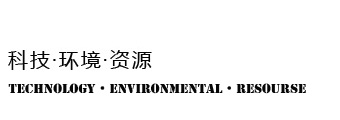Requirements, current situation and development trend of waste circuit board recycling
The main components of circuit boards are substrates and electronic components, and the main components are non-metallic components such as metals, oxides, organics, glass fibers, and epoxy resins. At present, it basically does not contain environmentally sensitive substances and has certain recycling value. It is pointed out in the “Hazardous Waste Exemption Management List” thatelectronic components, metals and resins in waste circuit boards can be exempted by disassembly and crushing, and the disassembly and crushing of waste circuit boards should have
corresponding qualifications: for the disassembly and crushing of waste circuit boards Broken, the production and operation license should be submitted to the local geological supervision bureau for approval according to law. With the production and operation license, the waste circuit boards can be recycled and dismantled. According to Article 24 of the Regulations on the Management of the Recycling and Disposal of Waste Electrical and Electronic Products, for the dismantling and disposal of recycled waste circuit boards, a written application should be submitted to the local ecological environment authority to apply for a qualification certificate for the disposal of waste electrical and electronic products. In addition to the above qualifications, the applicant should also submit written environmental protection permit application materials to the local environmental protection bureau to apply for the corresponding environmental protection permit qualifications.
In electronic waste, the recycling of circuit boards is difficult, but has high economic value. The metal grade in the circuit board is tens to hundreds of times that of ordinary minerals. The metal content is above 40%, mainly copper. In addition, there are metals such as gold, tin, nickel, lead, and silicon, including rare metals, while the content of rich metals in nature is usually only 3-5%. In addition, non-metallic waste residues of discarded circuit boards can be used as construction raw materials. At the same time, solder and plastic on discarded circuit boards are also important resources that can be recycled. Therefore, the establishment of more and more circuit board recycling plants provides a final destination for a large number of discarded circuit boards, and can also better protect the environment and one’s own health.
E-waste is a valuable resource. Strengthening the research and application of e-waste metal recovery technology is of great significance both from an economic perspective and from an environmental perspective. Due to the complexity and variety of e-waste, it is difficult to recover metals using any technology alone. The development trend of electronic waste treatment technology in the future should be the industrialization of treatment forms, the maximization of resource recovery and the scientificization of treatment technology. Studying the recycling of waste PCB can not only protect the environment and prevent pollution, but also facilitate the recycling of resources, save a lot of energy, and promote the sustainable development of the economy and society.








Leave a Comment